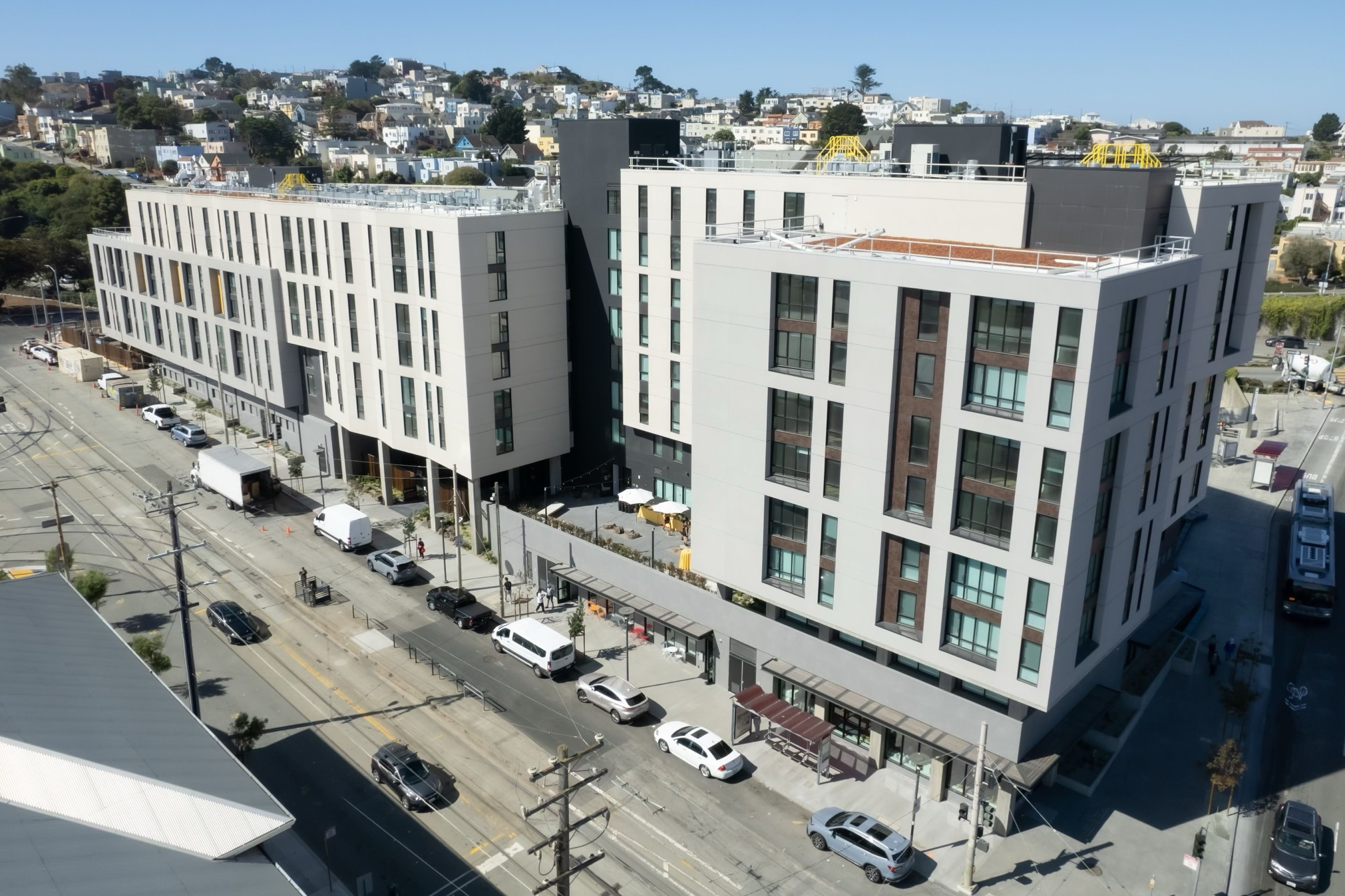OCII: Office of Community Investment and Infrastructure
Planning: Planning Department
TIDA: Treasure Island Development Authority
SFHA: Housing Authority of the City and County of San Francisco

San Francisco’s unaffordability is wide-reaching. Housing costs have increased far faster than inflation since the late 1990s and have risen to the 2nd highest in the nation since the 2011 boom. High costs and low supply bring personal hardship, accelerate displacement, undermine balanced economic growth, and cause environmental damage as workers suffer longer daily commutes. To become a truly resilient city, San Francisco must tackle the challenges of unaffordability for residents today and proactively build for the future.
Affordable housing is critical to the City’s economic and social well-being. Without housing that is affordable to a range of incomes, essential workers and families cannot afford to remain in the City. If that occurs, San Francisco risks losing vital components of its unique and diverse culture in combination with the associated negative economic impacts.
Housing affordability is also crucial to the City’s efforts to advance racial equity. Not only have historic housing policies like urban renewal and redlining furthered systems of structural and institutional racism, these policies continue to impact Black, Indigenous, and people of color today as they disproportionately experience homelessness, rent burden, substandard housing and overcrowding.
Overview
City leaders and voters have repeatedly demonstrated their support for policies and investments that address the housing needs of San Francisco’s workforce and vulnerable residents. Since 2012, San Francisco has passed numerous key initiatives to increase resources for affordable housing production, including:
-
2012: Housing Trust Fund as a set-aside within the City’s General Fund
-
2015: $310 million Affordable Housing G.O. Bond
-
2016: Significant increase to the inclusionary obligations on market rate housing
-
2018: Gross receipts tax to fund housing and services for people experiencing homelessness
-
2019: $600 million Affordable Housing G.O. Bond
-
2020: Health and Recovery G.O. Bond included $147M for permanent supportive housing
-
2022: Recovery Stimulus and Critical Repairs Certificates of Participation allocated $112M to affordable housing efforts
-
2024: $300 million Affordable Housing G.O. Bond
Moving forward, San Francisco will continue to prioritize and enhance programs and projects that produce and secure affordable homes. This longstanding commitment includes additional investments in permanent supportive housing (see the Health and Human Services chapter) and housing affordability at low and moderate incomes, as well as increasing capacity through zoning to allow more housing and affordable housing to be built equitably throughout the City.
Capital investment for acquiring and building affordable housing is the most permanent and secure approach for the City to create deed-restricted affordable housing. The content here defines the key terms of publicly supported affordable housing production and preservation; documents funding and feasibility principles for those efforts; describes planned, phased, and emerging projects that support greater affordability in San Francisco; and presents a comprehensive view of San Francisco’s projected investment in affordable housing.
Mayor’s Office of Housing and Community Development
MOHCD supports San Franciscans with affordable housing opportunities and essential services to nurture strong communities. The department works to create affordable housing, preserve existing affordability, protect vulnerable residents, and empower communities, neighborhoods, and people seeking housing. MOHCD’s programs to create and preserve affordable housing include 100% affordable multifamily housing development, HOPE SF (described in Economic and Neighborhood Development), down payment assistance loan, Small Sites, Preservation and Seismic Safety, and monitoring inclusionary mixed income housing development.
Planning Department
The San Francisco Planning Department works with decision-makers to increase the City’s livability through adoption of the City’s vision for the future, embodied by the General Plan. This comprehensive policy document guides public and private action concerning land use and zoning policy, community stabilization, urban design, public realm enhancements, and environmental planning. The City has adopted plans and programs to channel new development and to provide a framework for adding housing and jobs, this includes Area Plans such as Balboa Park, Eastern Neighborhoods, Market Octavia, SoMa, Rincon Hill, and Transit Center.
In addition, the City has adopted new programs such as HOME SF and policies to encourage the addition of Accessory Dwelling Units (ADUs). Together these plans and programs guide development growth, and the community benefits provided to the neighborhoods where growth occurs. The Planning Department updated its eight-year housing element in early 2023, the City's housing plan that determines housing needs and how to address them, defines priorities for decision making and resource allocation for housing programs, developments, and services.
Office of Community Investment and Infrastructure
OCII is the successor agency to the San Francisco Redevelopment Agency, which was dissolved in 2012 by order of the California Supreme Court. OCII is authorized to continue to implement the Major Approved Development Projects in the following Project Areas: Mission Bay North and South, Hunters Point Shipyard, Zone 1 of the Bayview Hunters Point (Shipyard/Candlestick Point), and Transbay. The greater development and infrastructure needs for those developments are described in the Economic and Neighborhood Development chapter. The affordable housing components of the OCII Project Areas are represented in this chapter.
Treasure Island Development Authority
Treasure Island and Yerba Buena Island, located in San Francisco Bay, contain approximately 404 and 150 acres, respectively. In early 2003, the Treasure Island Development Authority and the Treasure Island Community Development, LLC (TICD) entered into an Exclusive Negotiating Agreement and began work on a Development Plan for the islands.
As of September 2024, 648 new residential housing units, 10 acres of new parks and open space, and the first stage of infrastructure on Yerba Buena Island and Treasure Island have been completed. At full build-out, the Treasure Island/Yerba Buena Island Development Project will consist of a new neighborhood composed of up to 8,000 new residential housing units, new open space, retail and commercial space, and transportation amenities. The greater development and infrastructure needs for the project are described in the Economic and Neighborhood Development chapter and the affordable housing components are represented in this chapter.
Housing Authority of the City and County of San Francisco
The Housing Authority of the City and County of San Francisco (SFHA) has converted the majority of its public housing units to permanently affordable sites owned by non-profit management firms to enable the use of tax credits as a funding source for those properties. SFHA will continue to ensure compliance with eligibility and other programmatic requirements at these sites, but the management of the facilities is no longer SFHA’s responsibility.

